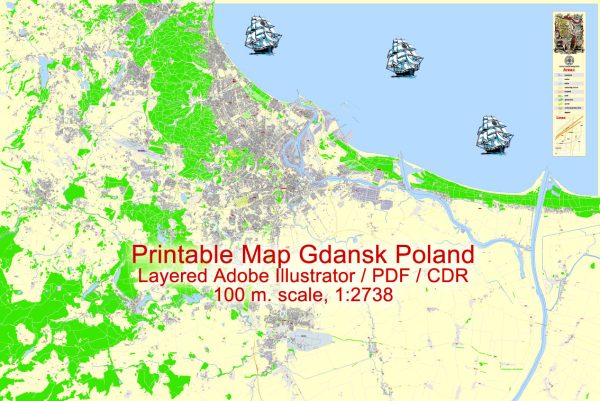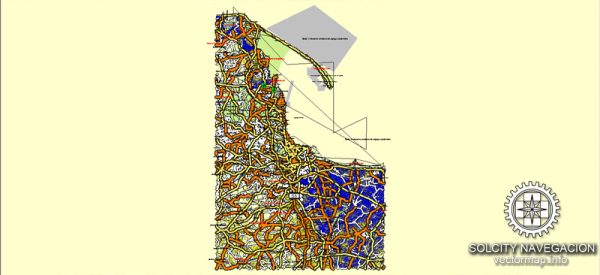Gdańsk, located in northern Poland, is a historic and vibrant city with a rich and complex history. Its history is closely tied to its location on the Baltic Sea, which has made it an important trading and cultural hub for centuries. Here’s a brief description of Gdańsk’s history:
- Early History: Gdańsk’s history dates back to ancient times when it was inhabited by various tribes, including the Slavs and the Pomeranians. It was part of the early Polish state and later came under the influence of various European powers.
- Hanseatic League: Gdańsk became a prominent member of the Hanseatic League, a medieval trading confederation, during the Middle Ages. This association contributed to the city’s economic prosperity and established its reputation as a key trading center in the Baltic region.
- Teutonic Knights: In the late 13th century, the Teutonic Knights established control over Gdańsk, leading to a period of conflict and tension with the Polish Crown.
- Treaty of Thorn (1466): Gdańsk returned to Polish control through the Treaty of Thorn, which marked the end of the Thirteen Years’ War. The city was granted significant autonomy within the Polish Crown.
- Golden Age: During the 16th and 17th centuries, Gdańsk experienced a period of remarkable economic and cultural prosperity. The city’s architecture flourished during this time, with splendid examples of Renaissance and Gothic buildings still present today.
- Partitions of Poland: In the late 18th century, Gdańsk, along with the rest of Poland, was partitioned among Prussia, Russia, and Austria. It became the Free City of Danzig, a semi-autonomous entity, under the Treaty of Versailles following World War I.
- World War II: Gdańsk was a significant location during World War II and was the site of the first military action of the war when it was attacked by Nazi Germany in 1939. The city suffered significant damage during the war.
- Post-World War II: After World War II, Gdańsk became part of Poland again and underwent extensive post-war reconstruction. It also played a pivotal role in the Solidarity movement, which was instrumental in the collapse of communism in Poland and other Eastern European countries.
- Contemporary Gdańsk: Today, Gdańsk is a thriving city with a mix of historical and modern elements. Its well-preserved Old Town is a popular tourist destination, featuring beautiful architecture, such as the Gothic-style St. Mary’s Church and the iconic Gdańsk Crane. The city also boasts a vibrant cultural scene and is known for its maritime heritage and the picturesque Motława River waterfront.
Gdańsk’s history is marked by its resilience, as it has endured various periods of foreign control, conflict, and rebuilding. The city’s historical significance, combined with its modern appeal, makes it a fascinating place to visit and explore.



 Author: Kirill Shrayber, Ph.D.
Author: Kirill Shrayber, Ph.D.